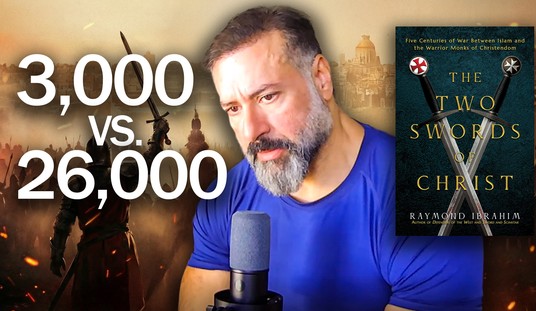[This is Part IV of a five-part essay; if you haven’t yet seen them, first read Part I, Part II, and Part III.]
While educators may be unconsciously relying on dubious theories of psychological modeling (as mentioned in yesterday’s essay) to justify the unrelenting ethnic tokenism in our nation’s schoolbooks, their official explanation revolves around the supposed need to boost students’ “self-esteem.” Those kids who do poorly in school, the theory goes, fail only because they have low self-esteem, leading to low expectations. Therefore, the best way to boost performance for struggling students is not to make their curriculum more challenging or to tailor it to their needs, but rather to use the curriculum as a mechanism to improve students’ self-image. If kids love themselves, the educational theorists claim, they’ll want to succeed, and if they want to succeed, they will succeed. Problem solved!
And so the entire educational system has systematically been re-tooled to focus on self-esteem building. In early grades this involves unsubtle classroom activities — assignments, songs, everybody-wins “contests” — directly informing each student how wonderful they are. In later grades, however, kids begin to grow more sophisticated and skeptical of such heavy-handed methods, so the curriculum designers “cleverly” embed self-esteem building hidden messages into the reading material where it can work on each student’s subconscious. Usually this involves praising and glamorizing “heroes” who just happen to share some ethnic/cultural/gender/appearance attribute with kids in the class, the assumption being that the students’ minds will internalize the message, “If this hero who looks just like me can succeed, then so can I!”
Needless to say, this is the biggest crock of baloney ever foisted on the American public. True self-esteem is not a precursor to achievement and success, it comes as the natural consequence of achievement and success. It’s something you earn, not something you’re given. And to the extent that one can artificially induce baseless self-esteem in someone who has not done anything noteworthy to earn it, one has only succeeded in creating a child with a personality disorder whose swollen ego and sense of entitlement will only later serve as a hindrance in adult real-world interactions.
All of that is brushed aside by the now-prevailing self-esteem mantra. And since statistics show that in most school districts there is a higher percentage of minority students struggling academically, the liberal curriculum designers invariably populate textbooks with inspirational minority heroes, thinking this will provide enough of a self-esteem boost to “eliminate the achievement gap.”
The end result of this self-esteem paradigm (or at least the leftist implementation of it) is a complete abandonment of any pretense of historical accuracy, as the following example illustrates.
Carver and Maxwell: a Tale of Two Scientists
Like most students in post-WWII America, throughout my schooling I was taught repeated lessons about George Washington Carver, a famed African-American agricultural scientist. My teachers always remained a little vague about what exactly his scientific achievements were, but we learned in no uncertain terms that Carver was a Great Scientist who must be respected and admired now and forever.
Years later, while taking a History of Science course in graduate school, I learned about a 19th-century Scottish physicist named James Clerk Maxwell. Prior to taking that class, I had never heard of the guy.
Now, older and wiser, looking at all this in retrospect, something uneasy dawns on me. Waaaaiiiiit a minute. What was that all about? Why was I (and just about every other kid in America) endlessly instructed on the glories of Carver, but never even apprised of Maxwell’s existence? Therein lies an instructional tale.
George Washington Carver
George Washington Carver, while perhaps being a good person, an altruistic person, and one of the first African-Americans to receive notoriety for his intellectual pursuits, was in fact not a “great scientist” nor one who made any significant scientific breakthroughs.
Just as with Roy Benavidez (the military hero mentioned in Part III of this essay), it’s not that I seek to criticize Carver. Did George Washington Carver raise himself up by his own bootstraps and intellect during an era of harsh segregation to become a respected professor and researcher? Yes. Did he strive to help his fellow man? Yes. Was he among the first black men to achieve national fame? Yes. So: Should George Washington Carver be included in textbooks? Certainly. But…not to the exclusion of more important scientists. And his importance should not be vastly over-emphasized (as it currently is).
The problem with textbooks is that they have limited space in which to convey an infinitude of knowledge. So, for example with the history of science, there should be a triage system whereby the most important scientists are the first to be assured inclusion in textbooks, followed by the slightly less important scientists, and so on. But if a personage of comparatively minor importance gets elevated to a higher position in the prioritization, that necessarily means some other scientist, whose contributions on an objective basis were more significant, must get excluded.
So, if students only have time to learn about the contributions of just one scientist, you should probably start (for example) with Isaac Newton. If the book has space for just two, then also include Albert Einstein. If three or four, you toss in James Clerk Maxwell and Galileo. And so on down the line. This is important on a meritocratic basis, and also because the students are not just learning about these scientists’ personal stories, but are in addition (hopefully) learning the fundamentals of science in the process.
Now, there have been many great scientists over the millennia. Hundreds and hundreds to choose from, in many different fields. And they are all (including George Washington Carver) worthy of admiration. Science is a noble pursuit. But, using purely objective criteria measuring the significance of what each scientist achieved or discovered, one would have to go through a thousand individuals of overwhelming historical importance before one came to George Washington Carver. He may have been a somewhat significant personage of social-historical note (i.e. as one of the first African-Americans of national stature), and he may have had good intentions, but he was not an important scientist. I fully realize that in this modern political environment it is simply not cool to point this out, but it’s an essential component of the debate which remains unspoken.
George Washington Carver’s reputation as a scientist is based on two things: advocating crop rotation, and developing alternate uses for the peanut. Let’s look at each in turn.
Carver encouraged crop rotation to replenish soils in the South after decades of cotton monoculture had depleted the land’s nutrients. Good idea, and an admirable economic suggestion — but it was not a scientific breakthrough, or even something particularly original. Many other people in Carver’s era had been recommending the same thing for quite some time. And crop rotation (as a way to replenish soils) had been standard practice in Europe, the Middle East, China, ancient Rome and even ancient Mesopotamia for thousands of years. So, while it may have been a wise policy, it was not a scientific achievement.
Carver also supposedly developed hundreds of uses for peanuts, sweet potatoes and soybeans. However, he never kept lab notes, so we have no idea what any of his formulas were. Furthermore, not a single one of his novel agricultural products turned out to be be useful:
After his death the Carver Museum, which he had helped create at Tuskegee, credited him with developing 287 peanut commodities. One hundred twenty-three were foods and beverages, 68 were paints or dyes, and the rest were livestock foods, cosmetics, medicinal preparations, and miscellaneous uncategorized items. The catalog was inflated by much near duplication: among the individual entries were bar candy, chocolate-coated peanuts, and peanut chocolate fudge; all-purpose cream, face cream, face lotion, and hand cream; thirty cloth dyes, nineteen leather dyes, and seventeen wood stains. Many items were clearly not original with Carver–even “salted peanuts” was on the list (though peanut butter was not). Nor could the efficacy of every preparation, such as a “face bleach and tan remover,” be taken for granted. Since Carver left no formulas for these products other than a single patented peanut cosmetic, later investigators were unable to evaluate or confirm his production of many of them.
Along with the peanut Carver championed the sweet potato, a nutritional complement also well suited to Southern soils. Man could live by the peanut and sweet potato alone, he asserted, for together they constituted a balanced ration. Again he publicized the crop’s potential in quantitative terms. “The sweet potato products number 107 up to date,” he told the congressional committee during his peanut presentation. “I have not finished working with them yet.”
Working almost entirely alone, Carver was uncommunicative about his laboratory procedures. A visiting chemist from nearby Auburn University found that he evaded all questions about how his products were made. G. Lake Imes recalled as “enigmatic” his replies to inquisitive visitors to his laboratory. Robert L. Vann, a black journalist, asked him if he had recorded the formulas for his many discoveries. “To my amazement,” Vann reported, “Dr. Carver looked at me and smiled and said, ‘I have all of these formulas, but I have not written them down yet.’”
What explanation of his scientific achievements Carver did offer was not calculated to satisfy other scientists. Speaking in 1924 at the Marble Collegiate Church in New York, he declared that he never used books in his work and depended on divine revelation for his product ideas and methods. In later addresses he often repeated his laboratory conversations with “Mr. Creator,” who told him what to do.
James Clerk Maxwell
Now, compare Carver’s “achievements” as a scientist with those of James Clerk Maxwell. For the purposes of this essay, I informally surveyed 20 friends and acquaintances; 19 out of the 20 had learned of George Washington Carver in school — but only 2 out of 20 had ever heard of James Clerk Maxwell. And yet, by most historical assessments, Maxwell was the third greatest scientist who ever lived, and the only one essentially on the same level as Newton and Einstein. Perhaps more than any single person, Maxwell paved the way for the modern world.
For the uninitiated: Maxwell revolutionized our understanding of the universe by discovering that electricity, magnetism and light were all manifestations of the same thing, the electromagnetic field; he was the first person to mathematically define the true nature of light itself; he overturned classical physics by finding a way to precisely describe matter (gas, in particular) using statistical models rather than individual measurements. Most of modern physics uses Maxwell as its launching pad; relativity and quantum mechanics are the direct descendants of his breakthroughs. Oh, and in his spare time, he invented color photography, among numerous other mind-boggling achievements.
Why mention Maxwell in this article? Because, despite his towering stature as one of the greatest and most influential geniuses who ever lived, he is rarely mentioned in any modern American K-12 textbooks, aside from a few Advanced Placement high school physics texts.
And yet George Washington Carver is nearly ubiquitous in schoolbooks for kids of all ages.
Now, if Carver was simply held up to students as an inspirational figure who overcame poverty and racism to achieve self-dignity, I’d have no quarrel with his ubiquity. But the problem is the endless insistence by the teachers and the books on Carver’s greatness as a scientist. Because if he was simply (but more accurately) portrayed as an underprivileged black man who rose through his own smarts and diligence to become a run-of-the-mill professor and nothing more, then the fable would not be so inspirational.
And so the story of Carver has been embroidered and exaggerated over the years, until he has become this towering untouchable genius of major historical significance. Or, as one of the innumerable online instructional materials about him puts it, “He was one of the finest scientists the world has ever known.”
Meanwhile, poor Maxwell, who really was “one of the finest scientists the world has ever known,” is totally ignored.
Why? Because education is no longer about facts. It’s about feelings. It’s about self-esteem building. It’s a group therapy session, a community-wide pep talk sprinkled with manufactured heroes and role models whose tales are carefully crafted to be uplifting, facts be damned. And since the dominant Left’s ruinous insistence on identity politics insures that our selfhood is primarily defined by our ethnicity, we end up believing that George Washington Carver really must have been a great scientist — not because of his actual discoveries, but because it serves a purpose to believe so.
The Rise of the Special Interest Groups
The battle over textbook bias and falsehoods is not limited strictly to the left-right cleavage. All sorts of special interest groups, with varying degrees of success, insist that their version of reality be included in textbooks — often at the expense of the truth. For example, an influx of strings-attached Saudi money led to textbooks which taught that Muslims discovered America before Columbus, based entirely on wishful thinking. Islamic religious indoctrination, masquerading as neutral lessons about the Middle East, have become commonplace in American schools over the last decade.
The list goes on: Environmentalists, Native Americans, feminists, Hispanics, gay activists, the disabled, and many more groups have joined the fray to ensure that American educational curriculum does not give them short shrift. The end result is that much of our classroom time is spent reciting the grievance litanies of every self-defined social subgroup in America.
Gramsci
This fracturing of education into a million useless little pieces is not a bug of the leftist agenda — it’s a feature. The goal is (and has been for years) to use the public schools to transform American culture, in order to make it ripe for a communist revolution.
That’s right: communist. No more pussyfooting around. To quote from part of a photo-essay I published two years ago,
That’s right, I said “commie.” The word usually elicits one of two reactions:
Mainstream average Americans — who have been duped into thinking that communism is a relic of the past which disappeared with the fall of the Soviet Union — feel that anyone still battling against imaginary Cold War enemies must be some sort of Dr. Strangelove-esque kook who worries about Precious Bodily Fluids and builds fallout shelters in the basement; OR…
Communists themselves — who thought it was safe to emerge from the shadows now that the world’s attention was drawn elsewhere after the fall of the Berlin Wall — react to the word with revulsion and fury, accusing anyone who says it of being a fascist McCarthyite intent on persecuting innocent Americans with hysterical witch hunts.
There’s one little detail, however, that tends to get overlooked: The communists are still here, and they’re just as dangerous as they ever were, and have not relinquished their goal of overthrowing the United States and bringing an end to the capitalist system. And the reason I’m aware of this fact perhaps more than the typical person is that I often attend anti-war rallies, which is where communists really come out of the woodwork.
And the other arena in which communist ideology never went away is academia, and in particular the educational world. The state sponsors of communism (i.e. The Soviet Union) have mostly ceased to exist, but the ideology remains as strong as ever.
Perhaps the most accurate word to describe the leftist takeover of education is Gramscianism, yet since so few people are familiar with the term, “communism” drives the point home more forcefully. But most Americans would be well-served to learn a bit about Antonio Gramsci, the Italian communist philosopher whose ideas have grown to be as influential as those of Karl Marx himself.
 |
| Illustration by Buzzsawmonkey |
Wikipedia actually has a fairly honest encapsulation of Gramsci’s thesis, which I’ll quote here to avoid accusations that I chose a biased source:
Hegemony
Hegemony was a concept previously used by Marxists such as Vladimir Ilyich Lenin to indicate the political leadership of the working-class in a democratic revolution, but developed by Gramsci into an acute analysis to explain why the ‘inevitable’ socialist revolution predicted by orthodox Marxism had not occurred by the early 20th century. Capitalism, it seemed, was even more entrenched than ever. Capitalism, Gramsci suggested, maintained control not just through violence and political and economic coercion, but also ideologically, through a hegemonic culture in which the values of the bourgeoisie became the ‘common sense’ values of all. Thus a consensus culture developed in which people in the working-class identified their own good with the good of the bourgeoisie, and helped to maintain the status quo rather than revolting.
The working class needed to develop a culture of its own, which would overthrow the notion that bourgeois values represented ‘natural’ or ‘normal’ values for society, and would attract the oppressed and intellectual classes to the cause of the proletariat. Lenin held that culture was ‘ancillary’ to political objectives but for Gramsci it was fundamental to the attainment of power that cultural hegemony be achieved first. …
Intellectuals and education
… [Gramsci] claimed that modern intellectuals were not simply talkers, but directors and organisers who helped build society and produce hegemony by means of ideological apparatuses such as education and the media. Furthermore, he distinguished between a ‘traditional’ intelligentsia which sees itself (wrongly) as a class apart from society, and the thinking groups which every class produces from its own ranks ‘organically’. Such ‘organic’ intellectuals do not simply describe social life in accordance with scientific rules, but rather articulate, through the language of culture, the feelings and experiences which the masses could not express for themselves. The need to create a working-class culture relates to Gramsci’s call for a kind of education that could develop working-class intellectuals, who would not simply introduce Marxist ideology from without the proletariat, but rather renovate and make critical of the status quo the already existing intellectual activity of the masses. His ideas about an education system for this purpose correspond with the notion of critical pedagogy and popular education as theorized and practised in later decades by Paulo Freire in Brazil, and have much in common with the thought of Frantz Fanon. For this reason, partisans of adult and popular education consider Gramsci an important voice to this day.
Translated into practical terms and updated from its early-20th-century Italian cultural setting, Gramsci’s thesis is understood by the modern left to mean:
Socialist revolution will never happen in a nation if its culture continually reaffirms and enshrines middle-class capitalist values. Thus, in order to pave the way for the arrival of a communist state, radicals must first insinuate themselves into and/or influence the media and educational system, and from these positions of influence change public attitudes about the status quo. To achieve political hegemony, you must first achieve cultural hegemony.
This was a significant change from Marx’s and Lenin’s original ideas about communist revolution, which basically involved simply seizing power, public opinion be damned, and afterward propagandizing the masses to accept the new order. Gramsci realized that Marx had it reversed, and that the propaganda and indoctrination must happen first, in order to make the populace open to the idea of revolution; otherwise, rendered complacent by middle-class values and comforts, the populace would never consent to the upheaval of a revolution.
The media and public schools were correctly identified by Gramsci as the most influential cultural institutions, and it was therefore those that the left realized must be targeted.
It is this sophisticated Gramscian plan, and not the more brutish Marxist idea of simply seizing power by force, which has guided leftist thought in America since WWII. And it is why the media and education have, over time, been slowly turned into engines of leftist propaganda. Gramscianism matured into “critical pedagogy” which is the real-world application of his educational theories, and countless left-leaning young adults have for decades been nudged toward careers in education and the media. Some time ago, we crossed a threshold in which the Gramscian infiltrators no longer had to ply their trade surreptitiously, but became the majority in the media and in education, and after that point the process accelerated rapidly as they took over both fields and turned them into ideological weapons.
(As an aside: Note also that Wikipedia correctly identifies Frantz Fanon as a Gramscian thinker. “At night, in the dorms, we discussed neocolonialism, Franz Fanon, Eurocentrism, and patriarchy.” — Barack Obama, in Dreams of My Father.)
This explains the otherwise mystifying insistence by leftist educators on ignoring facts in favor of “politically correct” ideas and frameworks. I have little doubt that the majority of teachers and educators don’t even know they’re part of a Gramscian project but still plow ahead with their ideologically driven careers anyway, unaware that they are myrmidons paving the way for revolution.
Don’t miss the final installment, with a way out of this mess:
Part V: Proposals for an Educational Renaissance
Part I: Ideological War Spells Doom for America’s Schoolkids
Part II: What’s the Matter with Texas?
Part III: Indoctrination Nation
Part IV: In Pursuit of Cultural Hegemony
Part V: Proposals for an Educational Renaissance









Join the conversation as a VIP Member